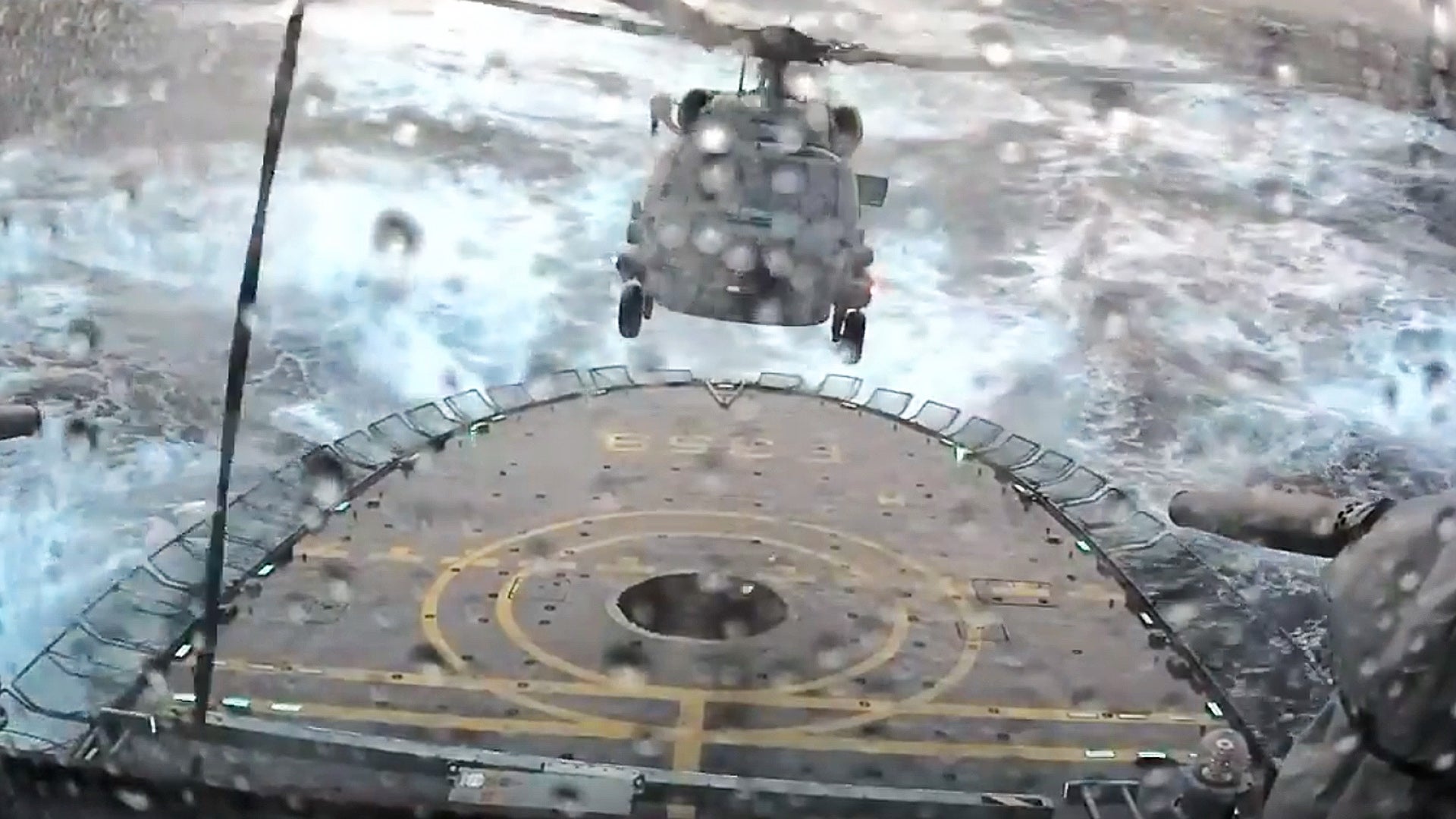Operating helicopters off of underway “small deck” surface combatants is not a job for the faint of heart. Some very brave pilots and deck crews go about these operations everyday—in good weather they are challenging, in bad weather they can be downright horrifying. It is a unique and very unforgiving flight environment where everything, including the surface of the earth, is undulating different directions—the ultimate dance of industrial technology and human hand-eye coordination.
The video below was just released by the Danish Ministry of Defense and it serves as textbook example of just how squirly it can get out there. In it, one of the Danish Air Force’s handful of new MH-60R Seahawks boards the Thetis class ocean patrol vessel HDMS Vædderen (F359) while crashing through rough seas near the Faroe Islands.

These ships were designed for the often violent conditions found in the North Sea, and the MH-60R is one of the finest and most proven multi-purpose naval helicopters ever built, but simply having good equipment doesn’t make such an operation easy, far from it.
Landing a helicopter on a small pitching and rolling deck can be a deadly affair as the margin between a safe landing and disaster is quite thin. In fact, any terminal operations around a ship can go terribly wrong even when the best aviators are at the helo’s controls. Sometimes just the ocean’s motion can leave a helicopter with severe damage even after the helicopter is safely on the ship’s deck. The videos below of other examples of just how harrowing small deck helicopter ops can be.




There are solutions that make recovering and securing helos on small deck ships safer and more crew friendly. Among others, the Recovery, Assist, Secure and Traverse (RAST) system is popular on high-end naval warships. It helps by winching the helicopter aboard the ship, and once it’s down, the umbilical attached to the helicopter’s belly locks it to the deck. A shuttle and track system allow the helicopter to then be rolled into the ship’s hangar bay while the aircraft is still secured to the deck. Here is the RAST system in action:

A less invasive system, called the Aircraft Ship Integrated Secure and Traverse (ASIST) system doesn’t use a winch-like umbilical to pull the helicopter onto the deck, but instead uses laser beacons on the helicopter and receivers on the ship’s stern to not only display visual landing aids to the pilot but to also dynamically position a shuttle right under the aircraft when it touches down. Once the helicopter has made contact with the deck, the shuttle locks onto a dongle hung from under the helicopter, thus securing the helicopter to ship’s deck. The shuttle system can also maneuver the recovered helicopter around the deck and into the ship’s hangar. Here is ASIST in action:

UK defense company MacTaggart Scott pioneered the development of shipboard helicopter recovery assist systems in the 1960s. The first being developed for the diminutive Westland Wasp helicopter. The basic concept lives on in the deck-lock system and others like it and, most notably the increasingly popular Helligrid system.
Basically, these systems don’t help pilots make safe contact with the deck of a ship, but they do make sure the helicopter stays put once contact has been made. This is done by a “harpoon” like dongle that hangs below the helicopter’s belly, similar to the one used in the ASIST system. Once that “harpoon” touches a grid area on the deck of ship it snaps onto it, safely holding the helicopter on the ship’s deck. It looks like the HDMS Vædderen has such a system in place and it was likely used during the MH-60R’s recovery shown in the video at the top of this post. Here is more about Helligrid:

These shipboard helicopter recovery assist systems are only becoming more relevant as unmanned rotary-wing aircraft begin to be commonplace aboard surface combatants. Come to think of it, it would be interesting to see just how rough of seas unmanned helicopters could operate in and how exactly they compare to their manned counterparts.
Still it’s safe to say that there will still be brave air and deck crews recovering helicopters on ships in the most horrible conditions imaginable for decades to come.
Contact the author: Tyler@thedrive.com
